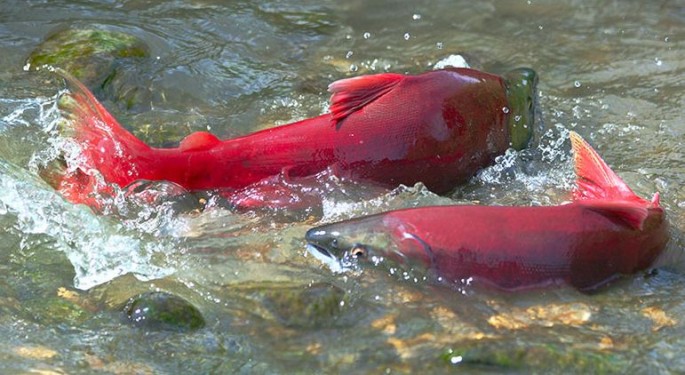California is desperately trying to save millions of Chinook salmon from perishing from the state's four year-long drought by transporting this endangered species in trucks from their inland hatcheries to the Pacific Ocean.
The persistent and massive drought has dried-up rivers and prevented hatchery salmon from reaching the ocean.
One of these hatcheries is the Coleman National Fish Hatchery on Battle Creek, a tributary of the Sacramento River in Northern California. The drought is preventing salmon from this hatchery from making their way to the San Pablo Bay near Vallejo to spawn. Coleman produces 12 million fall-run Chinook salmon every year.
The Coleman hatchery is one of five state-run hatcheries taking part in the salmon rescue mission. All five government hatcheries in the Central Valley are collecting all the baby Chinook salmon, a California native considered a species of concern under the Endangered Species Act.
The salmon are loaded onto fish tanks mounted on tanker trucks and transported to San Francisco Bay, where they are released and spawn to come back to the river a year after.
Up to eight tanker trucks, each carrying some 35,000 gallons of baby salmon, are involved in the rescue effort.
"It's huge," said Stafford Lehr, chief of fisheries at the department, as quoted by Tech Times.
"This is a massive effort statewide on multiple systems. We're going to unprecedented drought. We're forced to extreme measures".
The state's Department of Fish and Wildlife began this incredible rescue mission in February. Department officials described the rescue mission as the biggest ever in the history of California.
California successfully trucked salmon to the Pacific during the state's 1991-92 drought.
Young salmon travel the San Joaquin River to the bay to spawn. The drought, however, has dried-up 60 miles of the river, preventing the salmon from reaching the Pacific.
Because of the drought, there is no other way for the salmon to make their way to the ocean this year. What remains of the freshwater river network is often too warm and too shallow for the fish to safely make their way to the bay.
Salmon not successfully transported to the bay are kept in a man-made hatchery, instead.



























